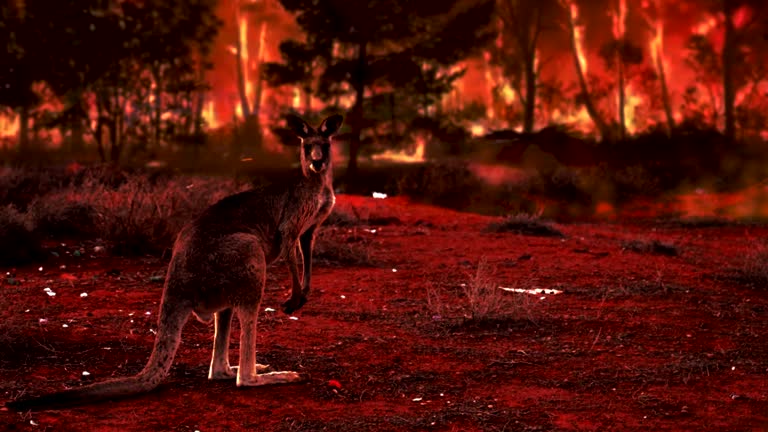Securing Your Home: The Important Duty of a BAL Report in Bushfire Readiness
Securing Your Home: The Important Duty of a BAL Report in Bushfire Readiness
Blog Article
Ensuring Shrub Fire Defense Through Proper BAL Record Evaluation
In the realm of bush fire defense, the precise evaluation of Bushfire Strike Degree (BAL) reports stands as a cornerstone for guarding homes against the destructive effect of wildfires. With ecological elements and residential property characteristics playing significant functions in establishing the level of threat, a complete understanding of BAL ratings comes to be essential.
Understanding Bushfire Assault Level (BAL)
In the realm of bushfire defense, understanding the Bushfire Assault Level (BAL) is extremely important for making sure effective mitigation techniques. BAL is a system used to determine the possible threat a building might deal with from a bushfire. It thinks about aspects such as the kind of vegetation, the slope of the land, the Fire Risk Index, and the Fire Seriousness Index. Comprehending the BAL rating of a building is essential for residential or commercial property policymakers, proprietors, and builders to apply proper procedures to guard versus bushfire hazards.

Importance of BAL Record Evaluation
An essential aspect in bushfire defense preparation includes the thorough evaluation of BAL records to evaluate the possible threats and identify proper mitigation methods. BAL reports supply essential info regarding the possible impact of bushfires on a home based on numerous elements such as plant life kind, range to prospective fire risks, and incline of the land. Evaluating these reports with accuracy is critical in developing reliable bushfire protection measures customized to the specific risk profile of a building.
Carrying Out Fire Security Steps
Executing reliable fire defense procedures is essential for guarding homes in bushfire-prone areas. Among the key ways to improve fire security is by creating defensible room around buildings. This includes clearing up combustible plants, such as dry fallen leaves and branches, within a specific radius of the residential property. Additionally, mounting fire-resistant roof covering materials can help in reducing the threat of embers igniting the roofing throughout a bushfire. Effectively maintained screens and gutters are also vital to prevent debris build-up that can fuel a fire.
In addition, having see post a well-maintained and ample water supply, such as a container or swimming pool, can help firefighters in their initiatives look here to secure the building. BAL Report. In general, applying a combination of these fire defense actions can substantially boost the possibilities of protecting residential properties during bushfire occasions.
Mitigating Dangers in Fire-Prone Areas
To strengthen buildings versus bushfire hazards, a critical emphasis on mitigating threats in fire-prone locations is necessary. One critical facet of danger mitigation is maintaining defensible space around properties by clearing combustible plants, making sure appropriate spacing in between structures and trees, and employing fireproof landscape design methods.
Additionally, constructing or retrofitting structures with fire-resistant materials and making certain correct maintenance of roofs, seamless gutters, and outside cladding can considerably boost the building's durability to bushfires. Practicing a bushfire and developing emergency situation plan with all owners, including evacuation treatments and communication methods, is also essential in mitigating dangers effectively. By embracing a proactive strategy to run the risk of reduction in fire-prone areas, homeowner can much better safeguard their properties and enhance general bushfire preparedness.
Ensuring Residential Property Safety and Durability
Guaranteeing the security and durability of residential properties in fire-prone locations calls for an unwavering click to investigate dedication to durable precautionary procedures and calculated planning. Home security begins with executing effective measures to reduce fire threats.
Strength, on the various other hand, includes the ability of a home to recover and withstand from a bushfire. This can be boosted with the setup of cinder guards on vents and home windows, making certain that access points for embers are minimized. In addition, having a well-balanced emptying plan and exercising it frequently can considerably enhance residential or commercial property strength. Working together with neighbors and neighborhood fire authorities can likewise bolster the safety and security and durability of homes in fire-prone locations. By proactively attending to these aspects, homeowner can better secure their assets and enjoyed ones from the risk of bushfires.
Verdict
Finally, making certain bushfire security with correct BAL report evaluation is important for recognizing the level of risk posed by bushfires and implementing essential fire security actions. By reducing threats in fire-prone locations and guaranteeing building security and durability, people and areas can much better prepare for and react to bushfire events. It is vital to prioritize fire safety and security procedures to safeguard lives and property in these high-risk atmospheres.
In the realm of bush fire defense, the precise evaluation of Bushfire Attack Degree (BAL) records stands as a foundation for guarding properties versus the damaging influence of wildfires (BAL Report). Comprehending the BAL ranking of a property is critical for property policymakers, proprietors, and contractors to apply proper steps to safeguard versus bushfire dangers

BAL reports offer vital details about the potential impact of bushfires on a residential property based on numerous variables such as vegetation type, distance to potential fire risks, and slope of the land (BAL Report). In general, carrying out a mix of these fire security procedures can dramatically raise the opportunities of guarding properties during bushfire occasions
Report this page